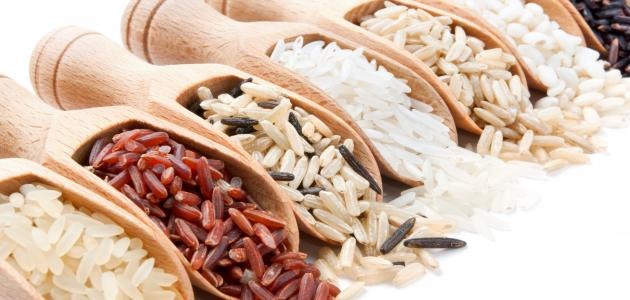Food Products
Flour
Flour or flour is a powder that is usually made from grains such as wheat, barley, corn, etc., and sometimes it is also made from potatoes, rice or any starch-rich crop. Flour is the main raw material in the manufacture of basic foods such as bread, cakes, pasta and other foods. Flour, especially wheat flour, is one of the basic foodstuffs that must be made available to the public, even in emergency situations, in order to prevent starvation.
The most common type of flour used around the world today is wheat flour because it contains high proteins in addition to the high gluten content in it that helps in the manufacture of bread and pastries.

Sugar
Sugar is a substance belonging to a class of foods, known as carbohydrates, the most famous of which is food sugar. It is a product of photosynthesis, which is the process of making food in plants, many of which are used in food. It is a carbohydrate, consisting of carbon, hydrogen and oxygen, and sucrose is extracted from sugar beets and sugar cane, and is widely used as a sweetener.
Sugars are present in the tissues of most plants, but are present in sufficient concentration for highly efficient extraction only in sugarcane, sugar beet and sugarcane that have been cultivated in the hot regions of South Asia and Southeast Asia since ancient times. A major expansion of its production occurred in the eighteenth century with the establishment of sugar cane plantations in the West Indies and the Americas. This was the first time that sugar became available to the public, who had previously relied on honey to sweeten foods.
Sugar production changed the course of human history in many ways, and affected the formation of colonies, the continuation of slavery, the transition to forced labor, the migration of peoples, and the wars between countries to control sugar in trade in the nineteenth century and affected the demographics and political structure of the new world.
The world produced about 168 million tons of sugar in 2011. The average person consumes about 24 kg of sugar per year (33.1 kg in industrialized countries), which equates to more than 260 food calories per person per day.

Oils
Vegetable oil is the oil extracted from natural plant origins, such as sesame oil, olive oil, sunflower oil, corn oil and other oils. It is a liquid that is less dense than water and often does not mix with it without the addition of mostly chemical intermediates. It is also made of tri-esters of fatty acids and glycerol, and they are called triglycerides, as they are produced from a reaction between glycerol and three types of similar or dissimilar fatty acids.
Man has known the production of vegetable oil for more than five thousand years from plants such as olives, soybeans, sunflowers, coconuts and others. Food oils and fats are the third essential component of human food after sugars and proteins. The first information about their chemical composition was known in 1823 AD. Scientific progress has also made it possible to know the components of the extracted oil and its impact on human health.

Rice
Cultivated rice or rice for short (in Latin: Oryza sativa) is not known exactly where the original rice is, but it is likely to be from East Asia. To the East and Europe, and it is said that it was transferred to Egypt during the era of the Rightly-Guided Caliphs, and the Arabs transferred it to Africa, then moved to Europe after the Crusades. It was planted in Italy in the fifteenth century and planted in America in the seventeenth century. Today rice is grown on all continents. Rice is an annual herbaceous plant belonging to the Poaceae family. The cedar plant is 50-180 cm long. The fruit is a berry that grows on a spike.

Spices
Mankind has been using spices in cooking since ancient times. It is believed that the oldest spices used in food preparation were cinnamon and black pepper. When merchants began traveling to distant lands, they took local spices with them and brought back new and unusual spices. Spices such as nutmeg, cloves, ginger, cumin and pepper were some of the most widely traded spices in the world.
● Paprika ● Tamarind ● Garlic ● Nutmeg ● Nigella sativa ● Fenugreek ● Asafoetida ● Mustard ● Brassica soda ● Indian mustard ● Galangal ● Saffron ● Ginger ● Sadie Indian ● Sassafras ● Sumac ● Sesame ● Senna ● Dill ● Chuniz ● Liquorice ● Vanilla ● sarsaparilla ● black pepper ● Brazilian pepper ● chili pepper ● Aleppo pepper ● cinnamon ● cloves ● camphor ● caraway ● celery ● turmeric ● coriander ● cumin ● black lemon ● mahlab ● salt ● Nakheh ● cardamom ● wasabi ● anise ● lysum ● chinbe ● Kebab ● crocodile pepper ● allspice ● ginger ● juniper ● szechuan pepper ● tonka bean ● jeduar ● barberry ● zest

